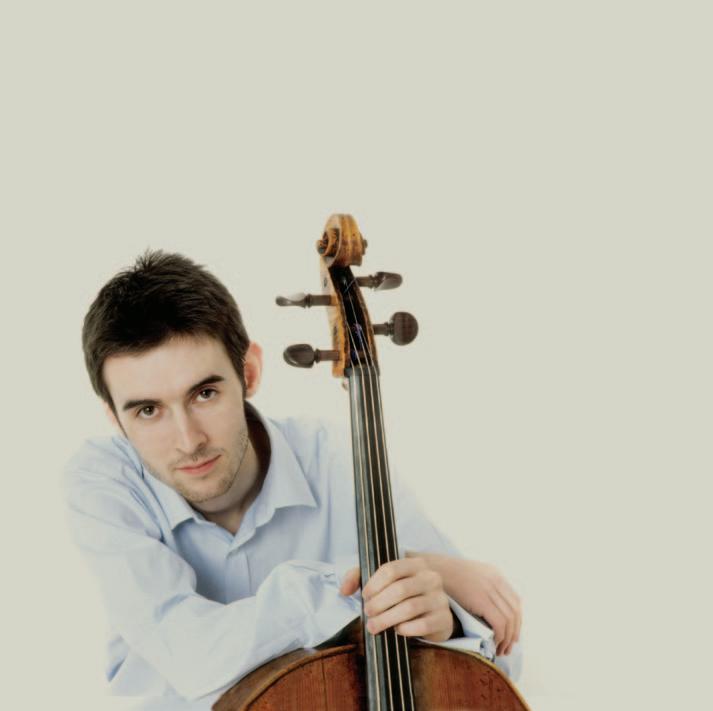

Britten Suite S for Solo Cello
Phili P h igham
Benjamin Britten (1913–1976)
Suite S for Solo Cello
Phili P h igham
Philip Higham and Delphian Records Ltd gratefully acknowledge the generous support of Hugh Richards in making this recording possible.
Recorded on 3-5 September 2012 in Broughton St Mary’s Parish Church, Edinburgh
Producer/Engineer: Paul Baxter
24-bit digital editing: Adam Binks
24-bit digital mastering: Paul Baxter
Design: John Christ
Booklet editor: Henry Howard
Cover photo © Sussie Ahlburg
Delphian Records Ltd – Edinburgh – UK www.delphianrecords.co.uk
Suite for Cello No. 1, Op. 72
1 Canto primo: Sostenuto e largamente [2:22]
2 Fuga: Andante moderato [4:00]
3 Lamento: Lento rubato [2:29]
4 Canto secondo: Sostenuto [1:10]
5 Serenata: Allegretto pizzicato [2:16]
6 Marcia: Alla marcia moderato [3:27]
7 Canto terzo: Sostenuto [2:14]
8 Bordone: Moderato quasi recitativo [3:01]
9 Moto perpetuo e Canto quarto: Presto [3:26]
Suite for Cello No. 2, Op. 80
10 Declamato: Largo [3:26]
11 Fuga: Andante [4:38]
12 Scherzo: Allegro molto [1:53]
13 Andante lento [5:42]
14 Ciaccona: Allegro [6:32]
Suite for Cello No. 3, Op. 87
15 Introduzione: Lento [2:10]
16 Marcia: Allegro [1:43]
17 Canto: Con moto [1:02]
18 Barcarolla: Lento [1:44]
19 Dialogo: Allegretto [1:23]
20 Fuga: Andante espressivo [2:49]
21 Recitativo: Fantastico [1:36]
22 Moto perpetuo: Presto [0:56]
23 Passacaglia: Lento solenne [8:56]
Total playing time [69:06]
Britten first heard Mstislav Rostropovich in London in September 1960 and instantly fell under his spell. Rostropovich spoke no English, Britten no Russian, so their meeting the day after the concert was a combination of smiles, Slavic gesticulations and schoolboy German, Britten somehow promising to write his new best friend a sonata provided he come and perform it at the following year’s Aldeburgh Festival. This was by no means a straightforward operation: the Cold War was at its iciest and to travel Rostropovich would need official permission from the steely Soviet minister of culture, Yekaterina Furtseva. Yet everything fell into place – not least an outstanding sonata, displaying some of the most interesting and virtuosic piano writing Britten had composed since the 1940s – and Rostropovich quickly assumed two roles in Britten’s life: close friend (Lord Harewood’s adultery had left the position vacant), and muse (Peter Pears’ emotional and physical distance increasing as the decade progressed).
Britten knew of Rostropovich’s virtuosity when he embarked on the sonata, and as a string player himself he was determined to exploit the possibilities of the instrument. There is grittiness in the piece, but so too is there opulence and a sense of grandeur, qualities of course that define his next major work, War Requiem. Commentators later intuited that Britten feared the great success of War Requiem meant it had
missed its target, and that his subsequent retreat from public life and large-scale works was the result. Certainly he craved more intimate forms after War Requiem, but there were a slew of reasons for the shift, which in any case dated back at least to 1957, the year he swapped his house on the beachfront in Aldeburgh for Mary Potter’s secluded home just outside town and started thinking about the first of his small-scale church parables, Curlew River. He was caught up in a paradox of his own making, a composer determined to reach as wide an audience as possible but at the same time live a private life and write music of increasing intimacy. ‘I haven’t yet achieved the simplicity I should like in my music,’ he wrote in 1963, and in many ways the decade charted his quest for this simplicity.
So Rostropovich came into his life at a crucial juncture. He helped Britten consolidate some of the musical and philosophical ideas that had begun to preoccupy him – without ever quite being in focus – in the late 1950s, and unlocked yet others. Regardless of Pears’ great artistry, there was always a sense of limitation in the works Britten composed for him, whether it took the form of compensation for the relatively small size of his voice or the need to exploit lyricism over agility. There were no such limitations with Rostropovich, a fact which the cellist tacitly acknowledged when, rehearsing the sonata in Aldeburgh for its premiere in July 1961, at one
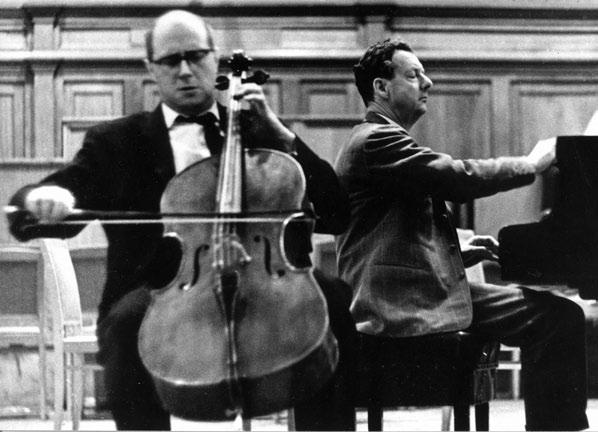
Image courtesy of www.britten100.org: 1963 – Rehearsing with Rostropovich in Moscow
point he jumped up to hug the reserved Britten, so exhilarated was he by the considerable demands made of him. There are strong links between the sonata and the Symphony for Cello and Orchestra (1963), though the later work exemplifies the shift in Britten’s thinking. It is simultaneously large-scale and intimate, its near-classical orchestra used sparingly, the work sometimes behaving like a concerto, other times enacting a muted conversation between orchestra and soloist which is overheard by passers-by. It is a work of great daring and simplicity, brimful of instrumental colours and startling theatrical effects, and it, in turn, prepared the ground for the three cello suites.
Of course Britten planned to write six, in homage to Bach and in fulfilment of an undertaking, made partly in jest, to Rostropovich for a matching set, a contract drawn up on a table napkin and signed by the composer. There were two risks: that the comparison with Bach’s suites would ultimately prove invidious, and that Britten would be hostage to the various forms he employed in each suite – Fuga, Marcia, Scherzo, etcetera – a criticism that had dogged him since the 1930s, sometimes with justice. But just as the Britten of ten years earlier could not have written the Cello Symphony, so too the suites demonstrate a composer undaunted by their challenge, confident to step out from Bach’s shadow. And he was, of course, a much better composer than he had been in the 1930s.
Britten wrote the First Suite for Cello in November and December 1964. He had hastily scribbled cadenzas to Haydn’s Cello Concerto in C (Hob. VIIb/I) for a performance by Rostropovich in the Aldeburgh Festival in June of that year and felt entirely comfortable about writing for the solo instrument with no orchestral safety net. There is something entirely hypnotic about the opening Canto, almost as if he himself was looking at the scant melodic material from a handful of different angles, improvising as he went, gaining in confidence all the while. He had long been a little too fond of fugue – a legacy of his tuition with John Ireland who was determined to instil a greater sense of discipline in his pupil than he thought Frank Bridge had managed – sometimes pressing the form into unlikely contexts. But here he seemed to relish the challenge of creating a contrapuntal texture on an instrument that can play no more than two notes at any one time. Arguably he was more successful in the Fuga in his second suite, incorporating delicious silences into the theme which are soon filled with counterpoint.
But there is still enough for the ear to latch onto in the first suite’s Fuga, even if its treatment is less adventurous in comparison. He had also been writing laments since the 1930s, so the incorporation of one here is not surprising. Even so, he packs the droopy melody with so much melancholia that its inclusion and significance startles. Only in the Marcia does an explanation emerge, amidst the haunted bugle calls and
drums of war: the suite is a coda to the War Requiem, disguised at times by the gypsy band Britten conjures in the Bordone and the sheer momentum of the Moto perpetuo, which is punctuated by threads of the opening Canto, but a coda nonetheless. Most of his works in this decade – even the non-programmatic ones – were a protest in one way or another at the violence and senselessness of war.
Britten completed the Second Suite in August 1967. He had spent much of the previous two years building a superb concert hall in a disused maltings in Snape, Suffolk, twisting arms and raising cash; and it was here, in June the following year, that Rostropovich first performed the new work. The suite is a snapshot of a lifetime of musical obsessions, from the intricate Fuga to the trudging Andante, with its Mahlerian drum beats and steadily increasing intensity, to the Ciaccona, built on a ground bass, a nod towards Purcell. There are fewer movements than in the suite’s predecessor, although both works are the same length; almost as though Britten was determined to wring out every last drop of potential from his chosen forms. In some ways this makes the second suite more conventional than the first, although frequently Britten uses conventional ideas only to undermine them, along with our expectations: witness the final ten seconds of the piece, a not entirely welcome interruption to the sparse landscape the movement maps.
In 1971 Britten probably still intended to honour his ‘contract’ with Rostropovich; he had no idea then how sick he was and how different his approach to composition would soon become. Despite its weak denouement, Owen Wingrave (1970) had masterfully departed from the more austere works of the 1960s and looked back to the swagger and brilliance of Billy Budd. Britten’s language had changed hugely since the early 1950s of course, spurred on by the sounds he encountered in Japan and Bali in 1956, but Wingrave was still much closer to Budd than to any of the church parables. In one key way the Third Suite reaches back to much earlier works. The suite makes use throughout of wisps of three Russian folksongs and the Kontakion, the Orthodox Church’s Hymn for the Departed, presenting each theme in its entirety only in the final movement. It was an idea he had first explored almost forty years earlier in A Boy Was Born, in which an incomplete theme is spelled out at the beginning of the piece, and riffed on for almost thirty minutes, until in the final pages it is given a full, simple statement. Britten returned to the technique throughout his career, notably in Lachrymae (1950, revised 1970), where in the final minutes Dowland’s melody unfolds with touching inevitability. In the third suite the statement of themes unifies the whole piece, making sense of the snatches of melody that have infused the texture so far.
To describe the atmosphere of the work’s beginning, cellist Natalie Clein once quoted from Joseph Conrad’s Heart of Darkness
A great silence around and above. Perhaps on some quiet night the tremor of far-off drums, sinking, swelling, a tremor vast, faint; a sound weird, appealing, suggestive, and wild – and perhaps with as profound a meaning as the sound of bells in a Christian country.
It’s a neat parallel, for there is something otherworldly about the opening, the haunting melody continually punctuated by a series of plucked open Cs, neither line acknowledging the other. Britten fashions a Barcarolla from the folksong ‘Autumn’ (bringing him closer to Bach’s turf than almost any other movement in the suites) and a Fuga from ‘Under the little apple tree’. And finally, after a careering Moto perpetuo that is over almost as soon as it begins, comes the slow reveal, in a movement that is almost half the length of the entire piece.
Perhaps the Auden of ‘New Year Letter (January 1, 1940)’ is more apposite than Conrad here.
The very morning that the war Took action on the Polish floor, Lit up America and on A cottage in Long Island shone Where Buxtehude as we played One of his passacaglias made
Our minds a civitas of sound
Where nothing but assent was found …
Auden was describing the home of Elizabeth and William Mayer, where Britten and Pears lived when they first arrived in America in 1939.
Buxtehude was a welcome, gleeful discovery: ‘Since my discovery of Mahler I haven’t been so excited over anything,’ Britten wrote to Lennox Berkeley. ‘I think he’s so much better than Bach!!!’ And in this final movement Britten repaid the debt, the Passacaglia gluing together the various themes Britten has toyed with throughout the suite. There is a cohesiveness to the piece, more so than to the other two suites perhaps, and a brazenness too: Britten had come to know the instrument so well since that fortuitous meeting with Rostropovich in 1960. Even if in 1971 he still intended to write another three suites – an undertaking dashed two years later in an operating theatre of the National Heart Hospital – he could not have composed a more fulsome tribute to his Russian friend than this.
© 2012 Paul Kildea
Paul Kildea is a conductor and writer. His books include Selling Britten and, as editor, Britten on Music, both for OUP. His major new biography of Britten will be published by Penguin Press in 2013.
Described by the The Strad in 2012 as having ‘all the qualities of a world-class artist’, Philip Higham is one of the only British cellists in generations to have won top prizes at three major international competitions including First Prize in the 2008 Bach Leipzig and 2009 Lutosławski Competitions and Second Prize in the 2010 Grand Prize Emanuel Feuermann Competition.
In 2011 Philip made his debut with the Academy of St Martin in the Fields and Vienna Chamber Orchestra. His solo appearances include with the Warsaw Philharmonic Orchestra, Arensky Chamber Orchestra, Orchestra da Camera di Caserta, the Kammerakademie Potsdam, Mendelssohn Kammerorchester and Edinburgh Youth Orchestra, at venues including the Konzerthaus (Vienna), Cadogan Hall (London), Royal Concert Hall (Glasgow) and Usher Hall (Edinburgh). In 2013 he makes his debut with the Bournemouth Symphony Orchestra and Philharmonia Orchestra performing the Elgar concerto.
Philip has given recitals at major festivals and venues throughout Europe including the Wigmore Hall, Bridgewater Hall, Mecklenburg Vorpommern, Münsterland, Leipzig BachFest, Manchester International Cello Festival, Grachten, Presteigne, Lichfield, Spitalfields,
Brighton, Lake District Summer Music and Cheltenham Festivals (the latter broadcast by BBC Radio 3), among many others. He has also performed the complete Bach Cello Suites at the Lammermuir Festival and Perth Concert Hall.
In 2009 Philip was selected by Young Classical Artists Trust (YCAT) and a year later was one of the first artists invited to take part in the Royal Philharmonic Society/ YCAT Philip Langridge Mentoring Scheme, working with Steven Isserlis.
Born in Edinburgh in 1985, Philip studied at St Mary’s Music School in Edinburgh with Ruth Beauchamp and at the Royal Northern College of Music with Emma Ferrand and Ralph Kirshbaum. He graduated in 2007 with first class honours and was immediately selected as an International Artist Diploma student. In 2012 he took part in the IMS Prussia Cove Fortieth Anniversary celebrations at Wigmore Hall.
On this recording Philip Higham plays a fine Tecchler cello (c.1730).
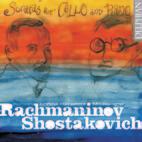
Rachmaninov/Shostakovich: Cello Sonatas
Robert Irvine cello, Graeme McNaught piano
DCD34034
An exceptional venture into the chamber repertory: Robert Irvine, whose recent recording of cello works by Giles Swayne was widely acclaimed, now appears as protagonist in these two classic Russian sonatas.
‘Rachmaninov’s impassioned Cello Sonata (1901) is one of the two crucial works – the Second Piano Concerto is the other – that signalled the composer’s return to self-confidence after depression. Rarely can it have been recorded in a performance of such potent and poetic intensity, intelligence and clarity as that which the Scottish cellist Robert Irvine and his responsive, vital pianist, Graeme McNaught, give here. Shostakovich’s Cello Sonata is equally well done: poised, subtle and controlled where it needs to be, but appositely pugnacious, brittle and pointed in the scherzo’ Sunday Times, July 2008
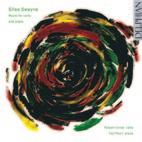
Giles Swayne: Music for cello and piano
Robert Irvine cello, Fali Pavri piano
DCD34073
Giles Swayne’s works for cello exhibit an astonishing array of moods and colours. The restless beauty of Four Lyrical Pieces and strident romanticism of the Sonata offer remarkable counterpoint to his Suite for solo cello. Canto seduces the listener with its symbiotic blend of African traditional and Western art music.
‘This music is ablaze with colour and irrepressible energy. Irvine and Pavri make it truly sing’ The Scotsman, March 2008
‘Superbly played … recorded with trademark spaciousness and clarity. [Canto] projects that positive tone and enquiring spirit which represent this composer at his considerable best’ Gramophone, March 2008
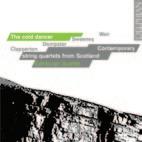
The Cold Dancer: Contemporary String Quartets from Scotland
Clapperton / Dempster / Sweeney / Weir
Edinburgh Quartet
DCD34038
Rich and personal contributions to the quartet tradition from four contemporary Scottish composing voices, ranging from the lyrical profundity of Kenneth Dempster’s meditation on a George Mackay Brown poem to a characteristically idiosyncratic and yet songful work by Judith Weir. Under their new leader Charles Mutter, the Edinburgh Quartet deliver blazing, committed performances celebrating the immense variety and vitality of work on offer.
‘On this outstanding CD, driven by scorchingly focused performances from the Edinburgh Quartet, the impact of the four pieces is colossal … Each of the composers is at his and her peak, and the Edinburgh Quartet has never played better. It’s nothing less than a landmark’
The Herald, February 2007
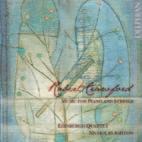
Robert Crawford: Piano Quintet & music for solo piano
Edinburgh Quartet, Nicholas Ashton piano
DCD34055
Elder statesman of the Scottish music scene, Robert Crawford has throughout his life lavished intense care upon every one of his comparatively few compositions. The Edinburgh Quartet and pianist Nicholas Ashton are intimately acquainted with Crawford’s work, and mirror the composer’s attention to detail in a long overdue survey of this lovingly crafted music, spanning sixty years of compositional activity.
‘an impressive collection … committed and excellent performances’ Musical Opinion, March/April 2008
‘splendid, incisive playing’ The Wire, April 2008

© Grand Prix Emanuel Feuermann (Dan Hannen)
